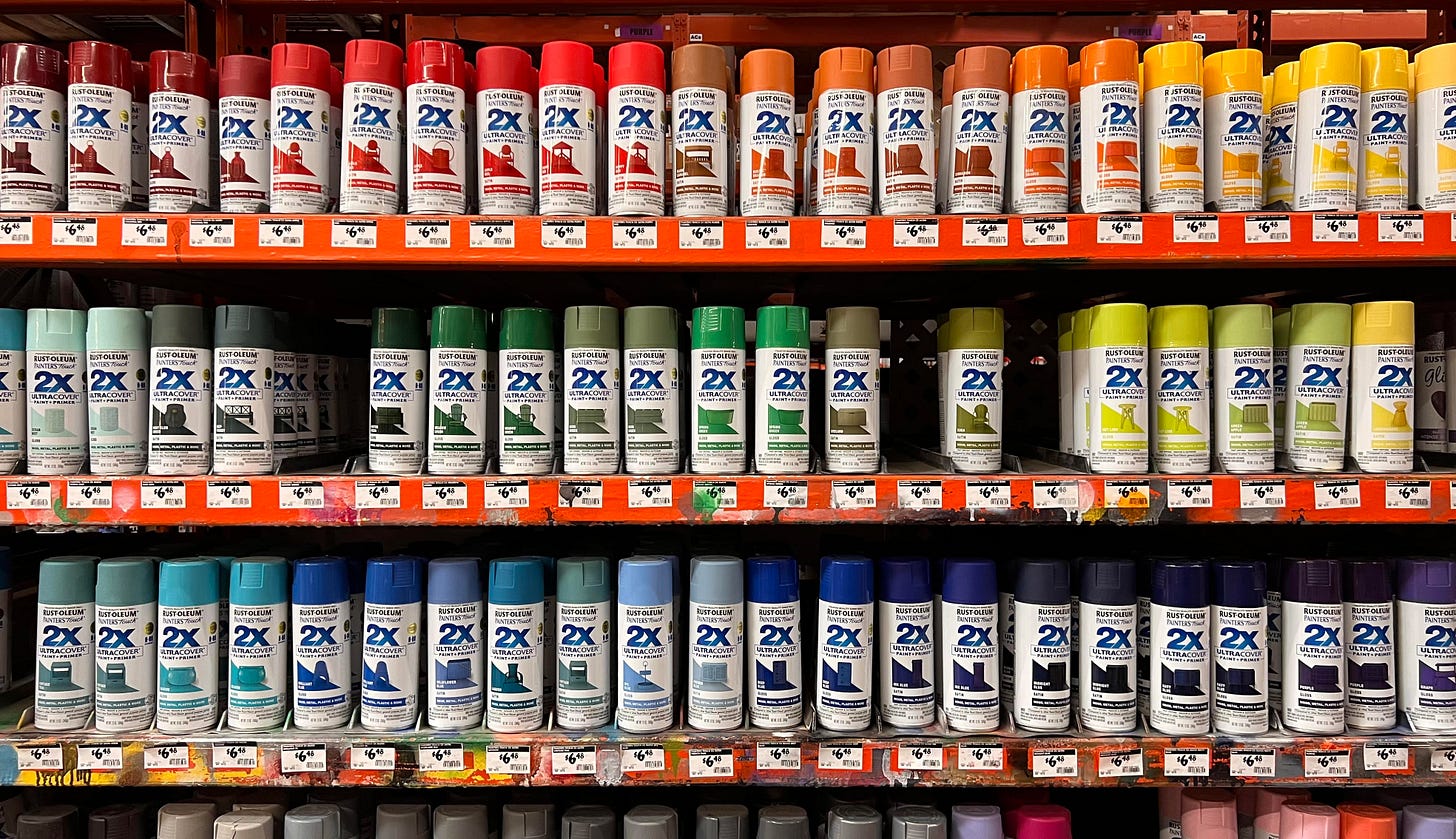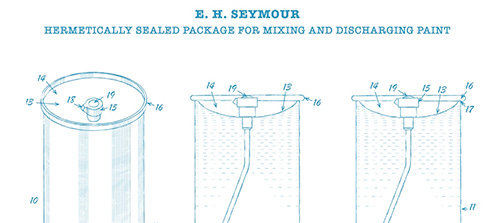Who Invented Spray Paint?
Spray paint’s utility and convenience is appreciated by homeowners, road crews, and vandals, but figuring out who invented it depends on how you define “spray paint” and how the product is applied.
The basic idea of using pressurized gas to distribute liquids goes back to the development of carbonated beverages in France in the 1790s. The 19th century saw the invention of pressurized steel cans that proved too heavy for practical use. In 1927, Norwegian engineer Erick Rotheim patented an aerosol can and valve for dispensing liquids—getting us closer to modern spray paint cans.
But let’s back up to look at the idea of spraying paint. In 1887, a maintenance supervisor for Chicago retailer Marshall Fields used a hand-pump sprayer, similar to today’s garden spray bottles, to apply whitewash to the walls in the store’s massive multi-story basement. Pour the paint in, pump the handle, and spray paint through a nozzle.
Back to pressurized cans. During World War II, the U.S. government funded research into pressurizing cans to provide a convenient way for soldiers to apply insecticides in the field. This led to the civilian commercialization by 1947 of aerosol bug sprays and deodorizers for homeowners.
Spray Paint in a Can
In 1949, Illinois paint manufacturer Ed Seymour needed a way to demonstrate an aluminum paint he had just developed for steam radiators. His wife suggested using a pressurized can with a spray head and, with some modification, the modern spray paint can was born.
While the paint looked great on radiators and was a success, its spray-can delivery system soon proved more profitable.
Ed’s company, Seymour of Sycamore, remains in business today. During the 1950s and early 1960s, it sold mainly to hardware wholesalers and paint distributors. It expanded into automotive markets in the 1960s and into industrial applications during the 1970s.
The 1970s also saw paint manufacturers expand their color palettes to match the, shall we say, vibrant colors used by appliance manufacturers. If you wanted your kitchen cabinets to match your new avocado or harvest gold appliances, all you needed was a few cans of spray paint and a weekend afternoon to make that dream come true.
Spray paint was also prized by the growing legions of vandals tagging their initials throughout urban environments and transit systems. Easy to apply, quick to dry, and easy to steal, spray paint became (and remains) popular among graffiti artists.
Spray Paint Safety
One of spray paint’s drawbacks comes from the chemicals used to propel the paint. They usually have a strong odor and, more importantly, can cause skin, nose, throat, or lung irritation if you’re using spray paint in a closed room.
If you’re planning to use spray paint indoors, a few precautions can reduce the risk of irritation, headaches, and nausea:
First, consider a “low VOC” (volatile organic compound) formula that will feature reduced odors and irritation risk.
Increase the room’s ventilation by opening windows and using a fan to direct fumes away from you.
Invest in a respirator mask designed for painting. Leftover blue pandemic masks won’t offer enough protection.
Safety issues aside, it’s helpful to remember that your spray paint can is launching paint into the air. Which means covering and protecting anything you don’t want to see painted. Despite the engineering prowess that’s gone into developing spray paint, we still have to address that challenge ourselves.





